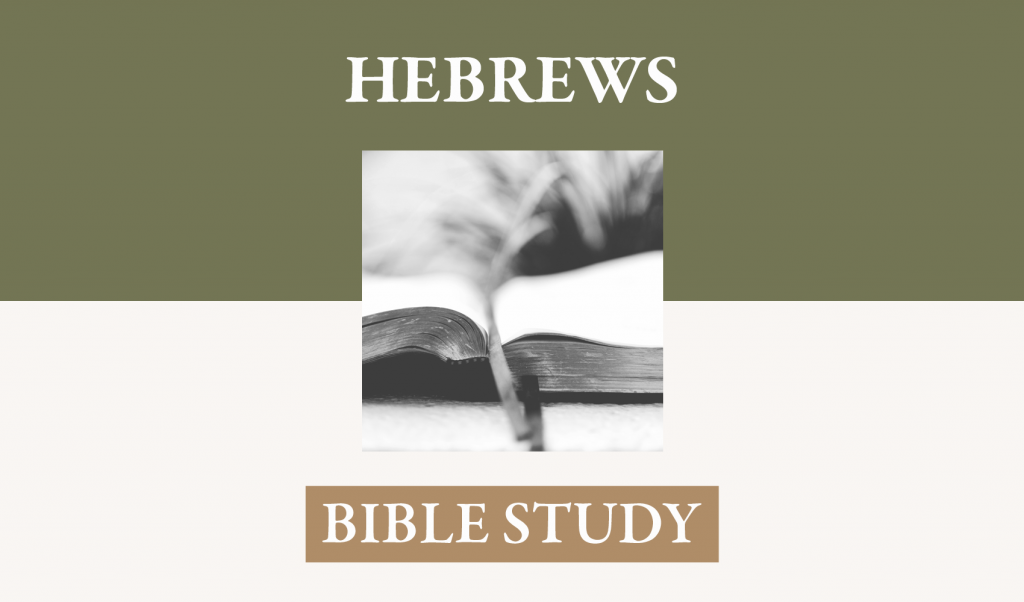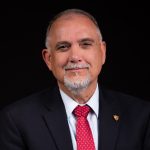Context: Chapter 7 closes with a summary of the qualities that we need, those things that are fitting, in a high priest, given his task of propitiating sin. All those things are implied in the oath that the Son would be a high priest after the order of Melchisedek: preceded by none of his order and succeeded by none. He must be a righteous reconciler, reigning forever by his finished redemption and his perfect righteousness. When a priest ministered only because the ceremonial law established him in that position, his operations were merely ceremonial and were unconnected with any effectual, internal qualities; The Son, however, came because of his intrinsic qualifications as co-equal with the Father and an eternal determination, the oath, to provide a covenant head for a redeemed humanity.
I. The perfection of Christ – Chapter 8 opens with the assertion that we have such a high priest. The complete success of his mission is seen in the fact that he is seated at the right hand of the throne of the majesty in heaven. Already he has rendered all other priestly work a nullity. The persons and the accoutrements of the levitical priesthood have no more relevance. All that they did as well as the location in which they did it has been fulfilled and permanently replaced by the real that has come. When the perfect comes the transient passes away. Look at 1 Corinthians 13:10 for Paul’s use of this principle in his discussion of the temporary nature of revelatory gifts. What constitutes his perfection?
A. He is seated at the right hand of the throne of the majesty in heaven. See this affirmation also in 1:3, 13; 2:9. He has been rendered perfect through suffering (2:10; 5:8, 9; as well as 7:28).
B. He ministers in the most holy place in the “true tent” that the Lord has set up. What is this? It means that all the holy attributes of God were fully manifest and satisfied in the work of the Son. God is the most holy place. The care with which the instructions must be followed reflects the infinite perfection and immutable character of God. Nothing can be changed but every requirement must be followed. Christ alone can minister with finality and perfection in that infinitely holy and righteous environment.
C. He has something to offer; part of the requirement is that in light of the transgression of the law and falling-short of God’s glory, something must be given as an equivalent reparation. Something must be accomplished to make straight, give consistency to the appearance, of a broken and crooked creature before him. So in type of what was absolutely necessary, the priests “had something to offer” according to the provision of the ceremonial law.
D. If he were functioning solely in one office and according to the ceremonial law, Christ would not be a priest at all for he was of a different tribe, the tribe of Judah. But his priestly office is in service of his kingly office as the heir to the throne of David, and as he would combine all the offices of prophet, priest, and king in one person, he must descend from Judah. By oath, therefore, he is made priest as was Melchisedek.
E. Christ did not, therefore, minister according to the ceremonial law as the “copy and shadow” priests did, but ministered according to the eternal moral purpose of God offering those sacrifices that were truly needed to accomplish a justly consummated redemptive kingdom– “According to his own purpose and grace” (2 Timothy 1: 9) “According to his eternal purpose which he realized in Christ Jesus our Lord” ( Ephesians 3:10) Even though in time the oath came after (7:28), it brought about the effecting of an eternal purpose.
F. The superiority of Christ’s ministry is measured in proportion to the superiority of the better covenant, which has been enacted on “better promises.” In 6:17 we read of the “heirs of the promise” being assured of the “unchangeable nature of his purpose” by an oath. These promises point to another aspect of the eternal and absolute efficacy of Christ’s work. In Titus 1: 2 Paul wrote of “the hope of eternal life which God, who cannot lie, promised before the ages began.” The better promises are promises secured by the internal relations in the Trinity. By now we are familiar with this manner of comparison by the writer. In1:4 –“Having become as much superior to the angels as the name he has received is superior to theirs;” in 3:3 – “as much more glory as the builder of a house has more honor than the house.” In 8:6 – “ministry that is as much more excellent than the old as the covenant he mediates is better.” The promises on which it is built are promises that God has made to himself, revealed in an oath, which is secured by the words, “The Lord has sworn and will not change his mind.”
II. The Better covenant
A. Not like the covenant with Israel during the time of Moses. That covenant included all the civil law and the ceremonial law that would make Israel a distinct nation through whom the Messiah would be brought into the world. It included also the moral law, often applied within the civil code and even reflected in the ceremonial practices, but standing discreetly as a distribution the creature’s moral duty to God. This law constituted righteousness and the transgression of it brought about death. While it stood as a goal for proper conformity of heart and action in true worship and revealed the righteousness by which one might attain eternal life, its main purpose was to reveal that all have sinned and come short of the glory of God and that we need a Savior. It was “our guardian until Christ came, in order that we might be justified by faith” (Galatians 3:24).
B. It is the covenant described in Jeremiah 31. In order of its revelation, this covenant is new for the Mosaic covenant, as preparatory in many ways, preceded it. In the order of importance, for its enduring purpose, it is preeminent.
1. He will secure the proper response by putting his law in the minds and writing it on the hearts of the “heirs of the promise.” We find rest in the work of Christ, receiving him by faith, a faith that is generated in our minds and hearts by the special instruction and transforming power of the Spirit of God.
2. Those consistent promises of the covenant are theirs, “I will be their God, and they shall be my people” See Revelation 21:3 for the culmination of this
3. The knowledge of God will not be derived from human instruction and will not consist merely of information that can be transferred by human pedagogy. (11:a)
4. This knowledge comes from the internal witness, instruction, and moral renovation of soul produced by the Holy Spirit [compare 1 John 2:20-27; John 6:44, 45, 63]
5. The change of heart and mind thus produced establishes union with Christ by faith and thus secures God’s merciful forgiveness of iniquities and sins. (12)
C. This new covenant so brought to pass renders the old one obsolete. At the time this letter was written, the ceremonies were still being performed, and that constituted part of the difficulty; they were tempted to return to a well-known and comfortable religious practice. The writer, however, knowing that it has all been fulfilled, has no more relevance, and to continue its practice amounts to a fresh denial of Christ’s messiahship and his atoning work and present intercession for us as our great high priest, knows that it is “ready to vanish away.”




















